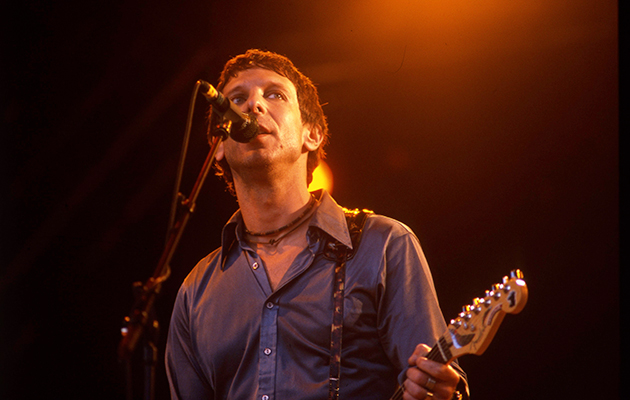GRASSHOPPER: We didn’t have a lot of money, we were just scraping together small publishing cheques we got from stuff like Yerself Is Steam. “Opus 40” and “The Hudson Line” were the first two songs we recorded, not too far from where Opus 40 actually is. I had met Rick Danko at a butchers shop and Levon Helm at this place where I get my hair cut. We realised that they were recording at this studio, NRS, run by Scott Petito. We asked Scott if Levon would be interested in playing on “Opus 40” and he said yes, so we were really psyched.
DONAHUE: This was pre-Midnight Ramble, and Levon was in a dark time, there was no question about it. The Band weren’t playing shows, and they weren’t all flush with money. This wasn’t the high point of two bands coming together – neither band was coming off highly successful records or periods in life, so we really mirrored one another.
SNYDER: We started recording “Opus 40” at NRS, on the Hurley flats. The studio was surrounded by farm fields and really, really desolate all around. It was so quiet, and dark.
DONAHUE: Levon came to the studio with his daughter Amy, and someone he referred to as a road manager, who was actually a local judge. It very much had that Elvis quality, that the people he was surrounded with were very protective of him. We’d never really rehearsed “Opus 40” properly, so I didn’t know what to expect when Levon showed up. But he was just so personable. There wasn’t a lot of talking. You didn’t have to chart anything out, you didn’t have to say, “This is how this goes.” He was smiling the whole time. I’ll never forget it. I went home that night, laid in bed and I was just in awe that I just played with Levon. It was probably the biggest contributing factor to Deserter’s Songs, ’cause it gave me confidence when my confidence was shot at that point.
SNYDER: Sometimes Levon would have a second drummer with him to make him feel comfortable, so Randy Ciarlante played that night too. We set up in a circle. The studio had a Hammond B3 with a real Leslie cabinet, and that’s what I was playing. I was facing Levon and I just kept looking up at him as I was playing, and it was magic. He was very gracious, he did a great job and we didn’t do a lot of takes, I’d be surprised if we did more than four or five. Later in the night, Amy and Marie mentioned, “Oh, we sing sometimes, just the two of us.” So the female vocals you hear in the song are Amy and Marie from that night. Then Amy said she was a really good whistler, so the whistling at the end of the song was also recorded that night, and it was just beautiful.
DONAHUE: A year or two ago, Amy told me that led to her having a career in commercial whistling. She went on to do commercials for a fast food chain, whistling. It was really funny. I guess one of the unintended consequences of the song.
SNYDER: By the winter, we moved the operation out to Tarbox [Dave Fridmann’s studio], which is in an extremely rural location in western New York. It’s a long drive from Kingston, so we would stay out there. Jonathan and I slept upstairs at the studio, Grasshopper stayed with his folks nearby, and Dave had his house in Fredonia. Others came and went throughout the process.
DONAHUE: I think it was only later in the recording that we got a record deal from V2, and that’s when we began to be able to afford Dave Fridmann, to be able to pay the bills at Tarbox, which was beginning as a studio.


